CustomRCmodels R/C Tank's | home
German Elefant
German Tank Killer Ferdinand/Elefant (Sd.Kfz.184)
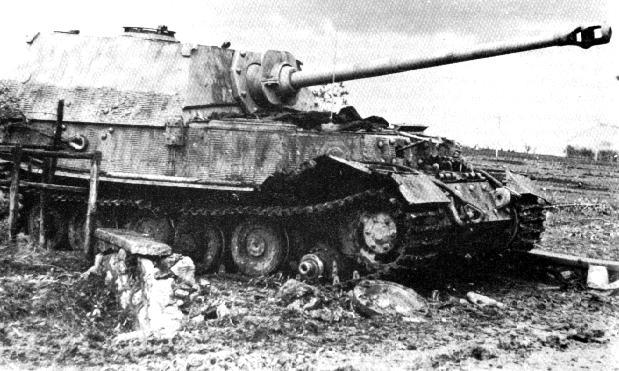
This Elefant was part of the 1st Company of SpzJgr 653 that was sent to Italy to help with the Anzio-Nettuno battles.
It was part of the first group of tanks that completed refitting. The Anzio landings had occurred behind the German lines,
so they were scraping together any units they could to plug the gap. The tank destroyer was knocked out by a mine.
All of the Elefants sent to Italy with the exception of two were put out of action,
and these two were returned to the rest of the battalion in Russia where the 2nd and 3rd companies had been returned.
Most Allied sources documenting the history of the Elefant/ Ferdinand incorrectly state
that the whole battalion went to Italy and that none survived.
Truth is not only was only one company sent and two survived,
but there were still 4 remaining Elefants at the beginning of the Battle for Berlin in April of 1945.
A little ways down the road, but in view of this gun where it was entering the road is another Elefant
that had slid into a ditch and could not be recovered. It is the subject of another popular photograph of Elefants.
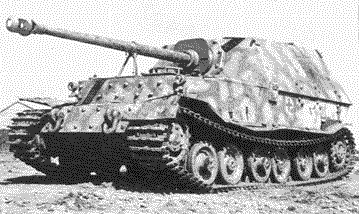
This is a Ferdinand from SpzJgr 654 during the summer of 1943. The 654th had this distinctive camouflage pattern.
The hull numbers for the three companies in the 653rd were 100, 200, and 300 series,
while the 654th were 500, 600, and 700 series for their three companies.
The vehicles were called `Ferdinand' after Ferdinand Porsche, but were renamed `Elefant' sometime in 1944.
Historians usually attribute the re-naming to when the two battalions were sent to be refitted
at the end of 1943 when the upgrades occurred, but it was actually about six months later that it is documented.
The major differences were a commander's cupola, bow machine gun, and the application of zimmerit.
The hulls originally had bow machine guns when they were to have turrets,
but when the hulls were converted to tank destroyers, they applied an additional armored plate and removed the machine gun.
The front of the hull had a total armor thickness of 200mm.
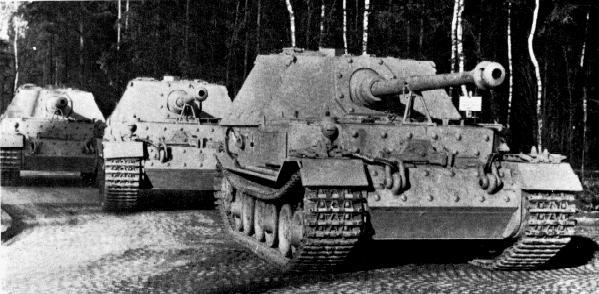
These are newly produced Ferdinands at Nibelungenwerke in Austria where they were assembled.
Note that they have no gun shields. This did not occur with all Ferdinands, and the ones that didn't have them were retro-fitted,
so these guns are probably early in the production.
Elefants weighed about 65 tons, and were powered by a Siemens electric drive powered by two Maybach HL120's.
Panzer IV's in comparison had a single HL120.
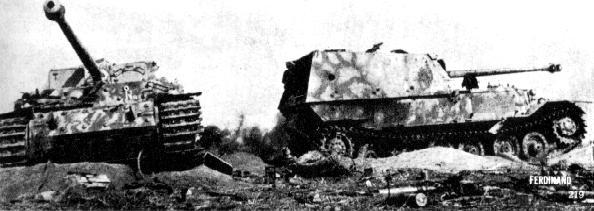
These are two Ferdinands from the 654th were knocked out during the Kursk offensive.
The vehicles had a rough debut at the beginning of the offensive as they were used initially during the assault,
but they were susceptible to flanking fire and tank-hunting teams and inadequately protected.
It was reported that they initially had structures built onto the back of the vehicles for supporting infantry,
but there is no documentary or photographic evidence that this occurred.
Veterans reported that it was a sled that was pulled by the vehicle.
The tank destroyers were then pulled back into the support role and used as bunker-busters,
and when the Soviets initiated their counter-offensive, they fought for the next few months in the same area.
The average kill of Soviet tanks was approximately 15 per gun.
One Ferdinand recorded a kill was at an unheard of 6 kilometers.
They used the new 88mm/ L71 Kwk 43.
The `N' seen on the front hull of the one on the left signifies Major Nowotny,
who commanded the unit and was killed early on during the Kursk offensive.
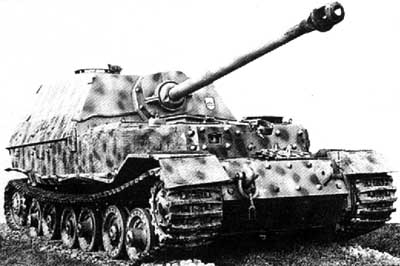
This is a picture of the Elefant at Aberdeen Proving Grounds in Maryland.
It has been repainted by the museum. It was captured in Italy from the 653rd battalion.
Note at the time of this early photograph at Aberdeen Proving Grounds there was still zimmerit on the side.
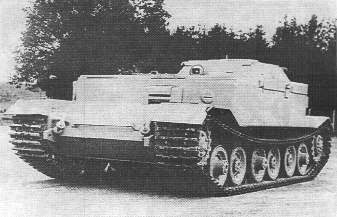
This is a BergeElefant.
When the 653rd and 654th returned for refitting, two hulls were selected for conversion to BergeElefants.
Note the location of the machine gun. When the tanks were all refitted, the personnel of the 654th were transferred
to re-equip with Jagdpanthers, and the 653rd gained all of the Elefants from the 654th.
Of interest, the Jagdpanthers of the 654th were the tanks that Audie Murphy helped to turn away during the fighting in the Colmar Pocket
while machine-gunning the supporting troops from a burning American Tank Destroyer.
After the summer of 1944, there were only about 15 of the original 90 guns left.
The 653rd transferred all the guns to another unit and the re-equipped with the first Jagdtigers.